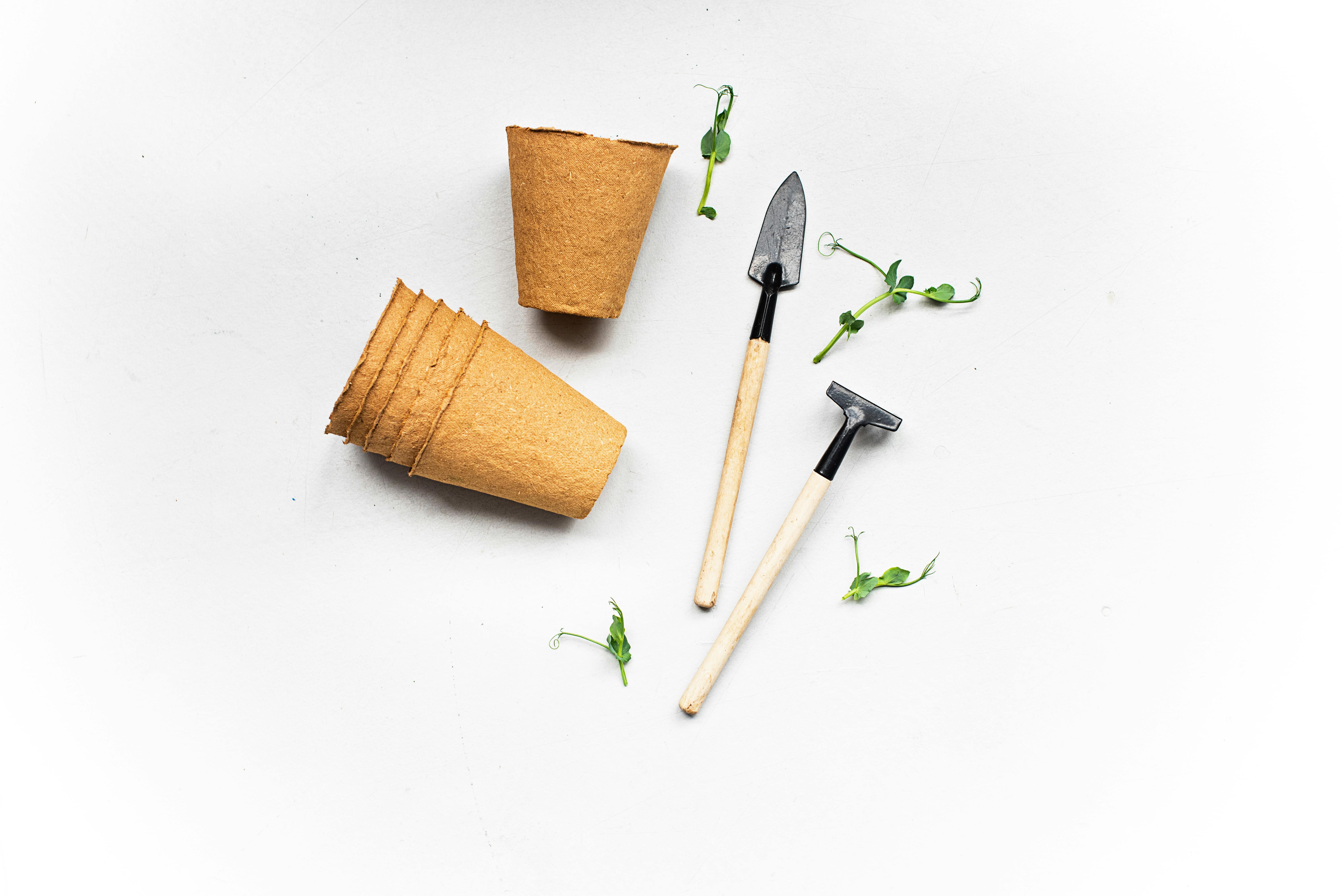Brussel sprouts are a highly nutritious vegetable that can be grown in a variety of climates and soils. When planting Brussel sprouts, it is important to consider which companion plants are best suited for this crop. Companion plants can help to deter pests, improve soil fertility, and encourage pollinators. This article will provide an overview of what to plant with Brussel sprouts in order to maximize their potential.To plant Brussel sprouts, start by purchasing seeds or seedlings from your local nursery. Before planting, make sure the soil is rich and well-draining. Plant the seeds or seedlings in rows, spacing them about 12 inches apart and 1 inch deep. Water the area thoroughly and keep the soil consistently moist throughout the growing season. Harvest when the Brussel sprouts are firm and bright green in color.
Ideal Location for Planting Brussel Sprouts
When it comes to planting Brussel sprouts, finding the ideal location is key. The best area is one that receives full sun, meaning at least six hours of direct sunlight a day. In addition, the soil should be well-draining and have a neutral pH level of 6.0 to 7.0. It is also important for the soil to remain consistently moist but not soggy.
Brussel sprouts prefer cooler climates, so areas with warmer temperatures are not ideal for growing them. The plants should be planted in an area where temperatures do not exceed 75 degrees Fahrenheit during the day or fall below 55 degrees Fahrenheit at night during the growing season.
The plants should also be spaced 12 to 24 inches apart from each other in rows that are two to three feet apart and kept weed-free throughout their growing process. Finally, having a trellis or some type of support in place can help keep the plants upright and prevent them from becoming too top-heavy when they are ready to harvest.
The Ideal Soil Type for Planting Brussel Sprouts
Brussel sprouts are a popular vegetable and can be grown in many different soil types. However, the ideal soil type for planting Brussel sprouts is one that is rich in organic matter and has good drainage. A loamy or sandy loam soil is ideal for growing these vegetables, as it helps to retain moisture and provide adequate nutrients. The soil should also have a pH level between 6.0 and 7.0, as this will help to ensure that the plants are able to access the necessary nutrients. Additionally, the soil should be well aerated and have ample amounts of organic matter in order to promote healthy root growth.
It is important to make sure that the soil is not too wet or too dry when planting Brussel sprouts. Too much moisture can lead to root rot, while too little water can cause the plants to become stressed and produce fewer fruits. If necessary, adding a layer of mulch around the plants can help to keep the soil moist without over-watering them.
Finally, it is important to make sure that any weeds are removed from the area where you are planting Brussel sprouts as they can compete with your plants for nutrients and water and cause them to produce fewer fruits. Additionally, it is important to rotate your crops every few years in order to prevent pests from becoming resistant to particular pesticides or herbicides used on your crop.
Overall, having a loamy or sandy loam soil with adequate drainage, a pH level between 6.0 and 7.0, ample amounts of organic matter, and proper weed control will all contribute towards growing healthy Brussel sprouts with good yields.
Varieties of Brussel Sprouts
Brussel sprouts are a popular vegetable, and there are many varieties to choose from. Depending on where you live, you might find different types of Brussel sprouts at your local grocery store or farmers market. Some of the most popular varieties include Green Sprouts, Red Sprouts, and Purple Sprouts. Each variety has its own unique texture and flavor.
Green sprouts are the most common variety found in stores, and they have a mild flavor that makes them popular with both children and adults alike. They can be boiled, steamed, roasted, or grilled for a delicious side dish or salad topping.
Red sprouts are a bit sweeter than their green counterparts and have a slightly firmer texture when cooked. They can be boiled or steamed for an easy side dish or used in soups and stews to add color and flavor.
Purple sprouts have an earthy flavor that is similar to cauliflower but slightly sweeter. They are best eaten raw in salads as their flavor becomes more intense when cooked. They also make an excellent addition to stir-fries and other dishes that require quick cooking times.
No matter what variety of Brussel sprout you choose, they are all a great source of vitamins, minerals, protein, fiber, and other essential nutrients. So why not try something new and see which type you like best?
Finding the Best Companion Plants for Brussel Sprouts
Brussel sprouts are an ideal addition to any garden, providing a tasty vegetable that can be harvested in the winter months. But what are the best companion plants to grow alongside them? Knowing which plants to pair with brussel sprouts can help maximize their growth and production, while also ensuring that your garden remains a healthy and vibrant ecosystem. Here are some of the best companion plants to consider when planting brussel sprouts:
Cabbage – Growing cabbage alongside your brussel sprouts is a great way to improve their growth and production. Cabbage helps repel pests, provides additional nitrogen to the soil, and provides protection from the elements.
Potatoes – Potatoes are a great companion plant for brussel sprouts because they provide additional nutrients to the soil while also helping keep weeds at bay. They also help create a better environment for beneficial insects, which can help protect your brussel sprouts from pests.
Beans – Beans are another excellent choice as a companion plant for your brussel sprouts. Not only do they provide additional nitrogen to the soil, but they also help increase yield by providing additional structure for climbing plants like vines or tomatoes. Plus, beans attract beneficial insects which can help protect your crop from pests and disease.
Garlic – Garlic is an effective companion plant for brussel sprouts because it helps repel pests while also providing additional nutrients to the soil. It has strong aromatic oils which deter many common garden pests, and it helps increase yields by improving soil drainage and aeration.
These are just some of the best companion plants you can use when planting brussel sprouts in your garden. By pairing them with these helpful companions you can ensure that your crop will be healthy and productive all season long!

Common Pests and Diseases of Brussel Sprouts
Brussel sprouts are a popular vegetable enjoyed by many, but they are susceptible to various pests and diseases. Common pests of brussel sprouts include aphids, moths, whiteflies, cabbage loopers, cutworms, and flea beetles. These insects can cause damage to the leaves and heads of the plants, resulting in lower yields. To prevent infestations of these pests, it is important to use good garden sanitation practices such as removing plant debris from the garden and keeping weeds under control.
In addition to pest problems, there are also several disease issues that can affect brussel sprouts. These include clubroot, black rot, and downy mildew. Clubroot is caused by a soil-borne fungus that causes swollen roots and stunted growth in plants. Black rot is a bacterial disease that causes yellowing leaves with dark brown spots or streaks on them. Downy mildew is caused by a fungus that affects the leaves of the plant causing them to become yellowish-green with fuzzy gray or white patches on the underside of the leaves.
To help prevent these common diseases from affecting your brussel sprouts it is important to practice crop rotation every few years so no one crop is grown in the same soil for too long. Additionally, using resistant varieties when possible can help reduce disease problems. Finally, if you notice any signs of disease or pest problems it’s important to take action quickly as catching them early can prevent major damage to your crop.
Water Requirements for Growing Brussel Sprouts
Brussel sprouts are a unique and flavorful vegetable that are relatively easy to grow in a home garden. However, it is important to understand the water requirements for successful cultivation of these plants. Proper watering is essential for healthy growth and development of Brussel sprouts. To maximize yields and ensure the best tasting crops, it is important to provide adequate water throughout the growing season.
Brussel sprouts need approximately 1 inch of water per week during the growing season. This should be provided either through rainfall or supplemental irrigation. If using an irrigation system, it is important to make sure that the system is set up properly and delivering water evenly throughout the planting area. It is also important to check soil moisture levels regularly and adjust irrigation accordingly. Too much or too little water can lead to wilting or stunted growth, so it is important to ensure that adequate moisture is available at all times.
In addition to providing consistent levels of moisture, it is also important to make sure that the soil drains well. Poor drainage can cause root rot and other issues that can lead to poor plant health and reduced yields. If necessary, raised beds or other drainage measures can be implemented in order to improve soil drainage in areas with heavy soils or those prone to flooding.
Finally, mulching around Brussel sprout plants can help conserve moisture in the soil and reduce evaporation from the surface of the soil. This will help keep soil moisture levels consistent throughout the growing season, which will help maximize yields and ensure healthy plants with high quality crops. By understanding the water requirements for growing Brussel sprouts and implementing proper irrigation strategies, gardeners can enjoy fresh home-grown produce all season long!
Soil Requirements
Brussel sprouts require well-draining, loamy soil with a slightly acidic pH of 6.0 to 6.5 for optimal growth. The soil should be amended with aged compost or manure prior to planting to provide adequate nutrients for their growth. Before planting, test the soil to ensure these conditions are met and make any necessary adjustments.
Fertilizing Requirements
Brussel sprouts will need to be fertilized during their growing season, typically with a balanced fertilizer that is high in nitrogen and low in potassium and phosphorus. Apply the fertilizer at least once during the early stages of growth and again just before they begin to form sprouts. Avoid overfertilizing, as this can cause excessive leafy growth at the expense of producing edible sprouts.
Mulching Requirements
Mulching around Brussel sprouts can help keep the soil moist and cool, as well as reduce weeds and disease pressure on the plants. Use an organic mulch such as shredded bark or leaves spread 2-3 inches thick around the plants, but not directly touching them. Replenish the mulch as needed throughout the growing season.

Conclusion
In conclusion, when it comes to what to plant with Brussels Sprouts, the choices are endless. You can easily plant a variety of companion plants such as onions, garlic, beets, and carrots that will help to deter pests and provide additional nutrients for your Brussels Sprouts. Other plants such as kale, chard, and lettuce are also good options for companion planting with Brussels Sprouts. Additionally, adding herbs or flowers to your garden can provide color and attract beneficial pollinators. Finally, remember that proper spacing and adequate sunlight are essential for all your plants in order to ensure the best harvest.
With careful planning and planting, you can create a beautiful garden full of nutritious vegetables like Brussels Sprouts. Planting companion plants is a great way to reduce pest problems while maximizing yields of tasty vegetables. So get out there and start planting!

